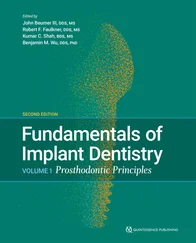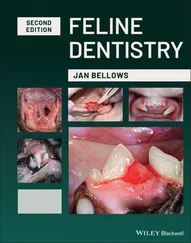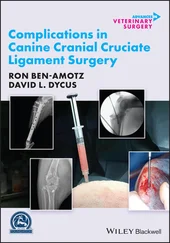1 Cover
2 Title Page Advanced Laser Surgery in Dentistry Georgios E. Romanos D.D.S., Ph.D., PROF. DR. MED. DENT. Stony Brook University School of Dental Medicine Stony Brook, NY, USA and Johann Wolfgang Goethe University School of Dentistry ‐ Carolinum Frankfurt, Germany
3 Copyright Page
4 Dedication Page
5 About the Author
6 List of Contributors
7 Preface
8 Acknowledgement
9 1 Laser Fundamental Principles 1.1 Historical Background 1.2 Energy Levels and Stimulated Emission 1.3 Properties of the Laser Light 1.4 The Laser Cavity 1.5 Laser Application Modes 1.6 Delivery Systems 1.7 Applicators 1.8 Laser Types Based on the Active Medium 1.9 Laser and Biological Tissue Interactions References
10 2 Lasers and Wound Healing 2.1 Introduction 2.2 Wound Healing and Low Power Lasers 2.3 Wound Healing and High‐Power Lasers 2.4 Lasers and Bone Healing References
11 3 Lasers in Oral Surgery 3.1 Introduction 3.2 Basic Principles 3.3 Excision Biopsies 3.4 Removal of Benign Soft Tissue Tumors 3.5 Removal of Drug‐Induced Gingival Hyperplasias and Epulides 3.6 Removal of Soft Tissue Cysts 3.7 Frenectomies and Vestibuloplasties 3.8 Removal of Precancerous Lesions (Leukoplakia) 3.9 Surgical Removal of Malignant Soft Tissue Tumors 3.10 Laser Coagulation 3.11 Lasers in Vascular and Pigmented Lesions 3.12 Exposure of Impacted, Unerupted Teeth 3.13 Removal of Sialoliths Using the Laser References
12 4 Lasers and Bone Surgery 4.1 Introduction 4.2 CO 2Laser 4.3 Excimer Laser 4.4 Er:YAG and Ho:YAG Lasers 4.5 Laser Systems for Clinical Dentistry References
13 5 Lasers in Periodontology 5.1 Introduction 5.2 Laser‐Assisted Bacteria Reduction in Periodontal Tissues 5.3 Removal of Subgingival Calculus 5.4 Removal of Pocket Epithelium 5.5 Retardation of the Epithelial Downgrowth 5.6 Laser Application in Gingivectomy and Gingivoplasty 5.7 Laser‐Assisted Hemostasis in Periodontics 5.8 Photodynamic Therapy in Periodontology 5.9 Gingival Troughing for Prosthetic Restorations 5.10 Fractional Photothermolysis in Periodontology 5.11 Education and Future of Lasers in Periodontal Therapy References
14 6 Lasers and Implants 6.1 Introduction 6.2 Laser‐Assisted Surgery Before Implant Placement and Implant Exposure 6.3 Laser Application During Function 6.4 Laser Applications in Peri‐implantitis Treatment 6.5 Recent Laser Research on Implants 6.6 Implant Removal 6.7 Laser‐Assisted Implant Placement 6.8 Future of Laser Dentistry in Oral Implantology References
15 7 Photodynamic Therapy in Periodontal and Peri‐Implant Treatment 7.1 Biological Rationale 7.2 Use of PDT as an Alternative to Systemic or Local Antibiotics 7.3 Conclusions References
16 8 Understanding Laser Safety in Dentistry 8.1 Laser Safety 8.2 International Laser Standards 8.3 Regulatory Agencies and Nongovernmental Organizations 8.4 State Regulations 8.5 Nongovernmental Controls and Professional Organizations 8.6 The Joint Commission (TJC) 8.7 Standards and Practice 8.8 Hazard Evaluation and Control Measures 8.9 Administrative Controls 8.10 Procedural and Equipment Controls 8.11 Laser Treatment Controlled Area 8.12 Maintenance and Service 8.13 Beam Hazards 8.14 Laser Safety and Training Programs 8.15 Medical Surveillance 8.16 Nonbeam Hazards 8.17 Electrical Hazards 8.18 Smoke Plume 8.19 Fire and Explosion Hazards 8.20 Shared Airway Procedures 8.21 Conclusion References
17 Appendix ASuggested Reading
18 Appendix BPhysical Units Laser Parameters Physical Parameters Important Formulas
19 Index
20 End User License Agreement
1 Chapter 1 Table 1.1 Thermal relaxation times for different chromophores of various size... Table 1.2 Laser systems with applications in medicine. Table 1.3 Optical output characteristics and heat generation efficiency on th... Table 1.4 Biological effects in soft tissues based on temperature increase (a... Table 1.5 Biological effects in hard tissues based on temperature increase (a...
2 Chapter 2Table 2.1 Wound healing effects of the low‐power lasers.Table 2.2 Wound healing effects of the high‐power lasers.Table 2.3 Wound healing in the rat skin, four weeks after Nd:YAG laser irradi...
3 Chapter 3Table 3.1 Operation mode and clinical procedure.Table 3.2 Chronological order in laser surgical procedures.Table 3.3 Tissue color and relationship to laser wavelengths and power settin...Table 3.4 Studies on leukoplakia removal and recurrence rate.
4 Chapter 4Table 4.1 Bone healing in the osteotomies using different laser systems compa...
5 Chapter 5Table 5.1 Bactericidal effect of laser irradiation in vitro.Table 5.2 Temperature increase during laser irradiation in vitro.Table 5.3 Root surface changes due to laser irradiation in vitro .Table 5.4 Suggested laser parameters for periodontal procedures.
6 Chapter 8Table 8.1 Related links.
1 Chapter 1 Figure 1.1 Electromagnetic spectrum and the different wavelengths. Figure 1.2 OCT device for clinical and diagnostic applications. Figure 1.3 Spontaneous and stimulated emission principles. Figure 1.4 Collimated light of the laser versus non‐collimated light of the ... Figure 1.5 Schematic demonstration of a laser device. Figure 1.6 Continuous (CW) and pulsed (chopped, gated) laser application mod... Figure 1.7 Transverse electromagnetic modes with regular, high concentrated ... Figure 1.8 Articulated arm for a CO 2laser application in the modern CO 2las... Figure 1.9 Hollow guide of a CO 2laser presenting the flexible delivery syst... Figure 1.10 Flexible optical fibers for medical and dental applications. Figure 1.11 Irradiation of soft tissues in the lamb vestibule using a cerami... Figures 1.12–1.14 Special tips for direct connection with the hand piece (le... Figures 1.15 and 1.16 Diode laser irradiation during frenectomy and partial ... Figure 1.17 Special tools to remove plastic coating around glass fiber witho... Figure 1.18 Innovative all metal‐tube compared to the classic old glass tube... Figure 1.19 Development of CO 2lasers over time by LightScalpel, Inc. demons... Figure 1.20 Argon laser device (Premier, Irvine, CA). Figure 1.21 Classic Nd:YAG laser (Pulsemaster 1000; American Dental Technolo... Figure 1.22 Nd:YAG laser device (American Dental Technologies, Southfield, M... Figures 1.23 and 1.24 Representative Er:YAG laser devices for dental clinica... Figures 1.25–1.27 Different Er,Cr:YSGG laser devices developed in the last 2... Figure 1.28 Various diode lasers for oral applications (from left to right):... Figure 1.29 Water absorption spectrum in the wavelengths of 980, 810, and 10... Figure 1.30 Blue‐light laser (SIROLaser Blue, Dentsply Sirona, Charlotte, NC... Figure 1.31 Incisions using blue laser light (445 nm) and average power of 2... Figure 1.32 Comparative incisions using blue laser light (left), pulsed CO 2... Figure 1.33 Basic concept of a fiber laser. Figure 1.34 Absorption spectrum of water and blood. Figure 1.35 Ytterbium high‐power laser developed by IPG Photonics Co. Figure 1.36 Superpulse diode laser (Alta‐ST, Surgical Laser System, IPG Phot... Figure 1.37 Physical properties of the light in contact with matter or biolo... Figure 1.38 The absorption spectrum of water, (oxy)hemoglobin, and melanin d... Figure 1.39 Absorption areas of the visible and near infrared (a), mid‐infra... Figure 1.40 Use of flat reflectors can produce direct reflections having haz... Figure 1.41 Concept of the photodynamic therapy of tumors (from Niemz 2019).... Figure 1.42 Effects of temperature distribution in the tissues (from Niemz 2... Figure 1.43 Photothermal effects of a 3 W‐CO 2laser on soft tissues (chicken... Figure 1.44 Photothermal effects of lasers on soft tissues (chicken breast) ... Figure 1.45 Schematic drawing of the penetration depth of different laser wa... Figure 1.46 Laser‐tissue effects based on the wavelength and the application... Figure 1.47 Principle of the fractional photothermolysis in the soft tissue.... Figure 1.48 Histological demonstration of the coagulation zones in the soft ...Figure 1.49 Concept of the Laser patterned micro‐coagulation (LPM) for impro...Figure 1.50 Principle of plasma cleaning process of a metal.
Читать дальше












